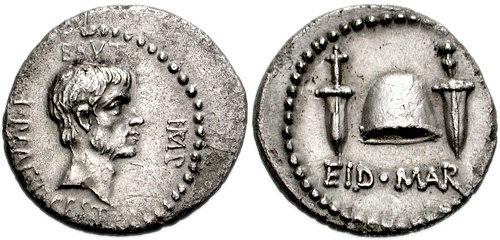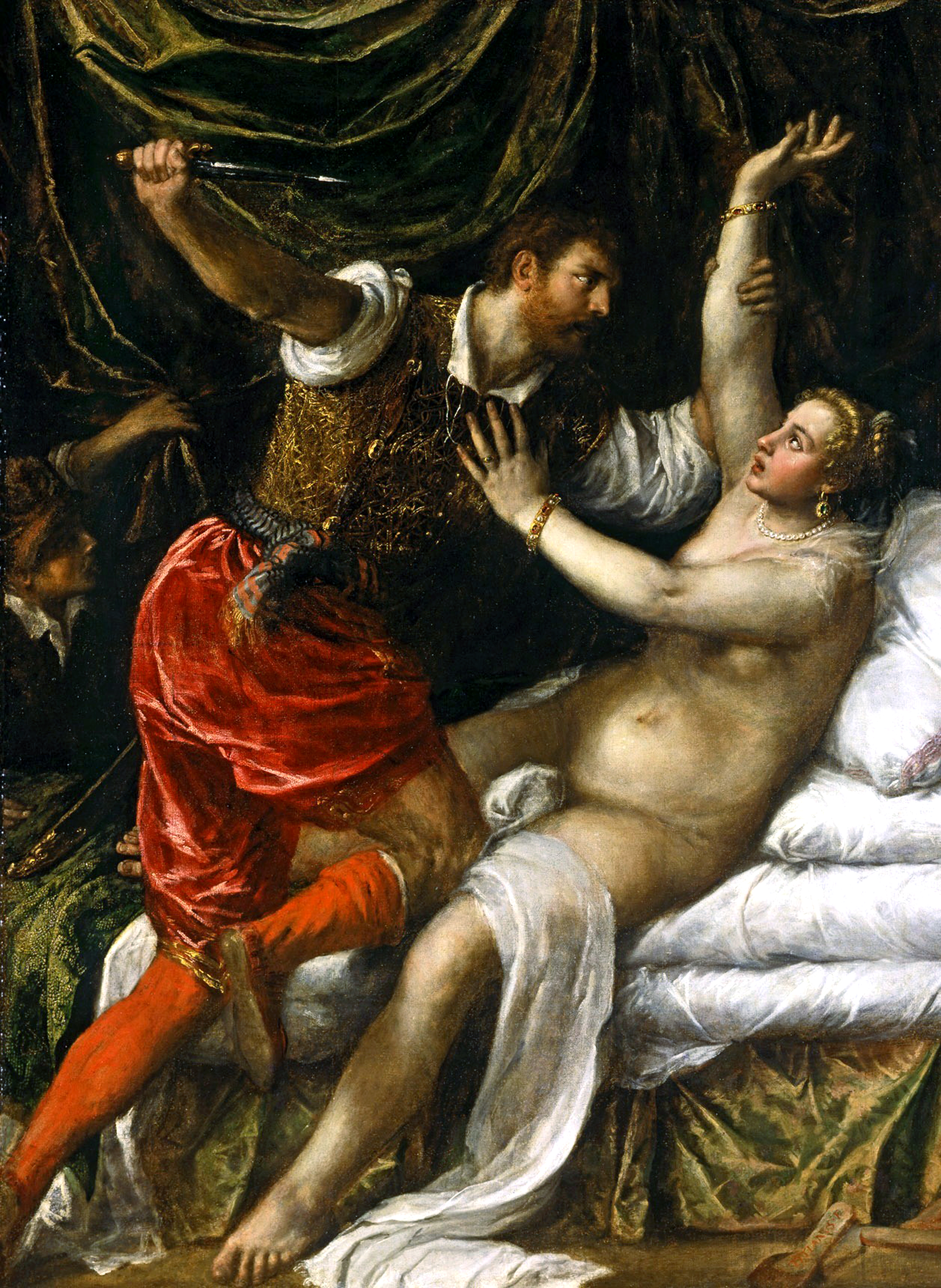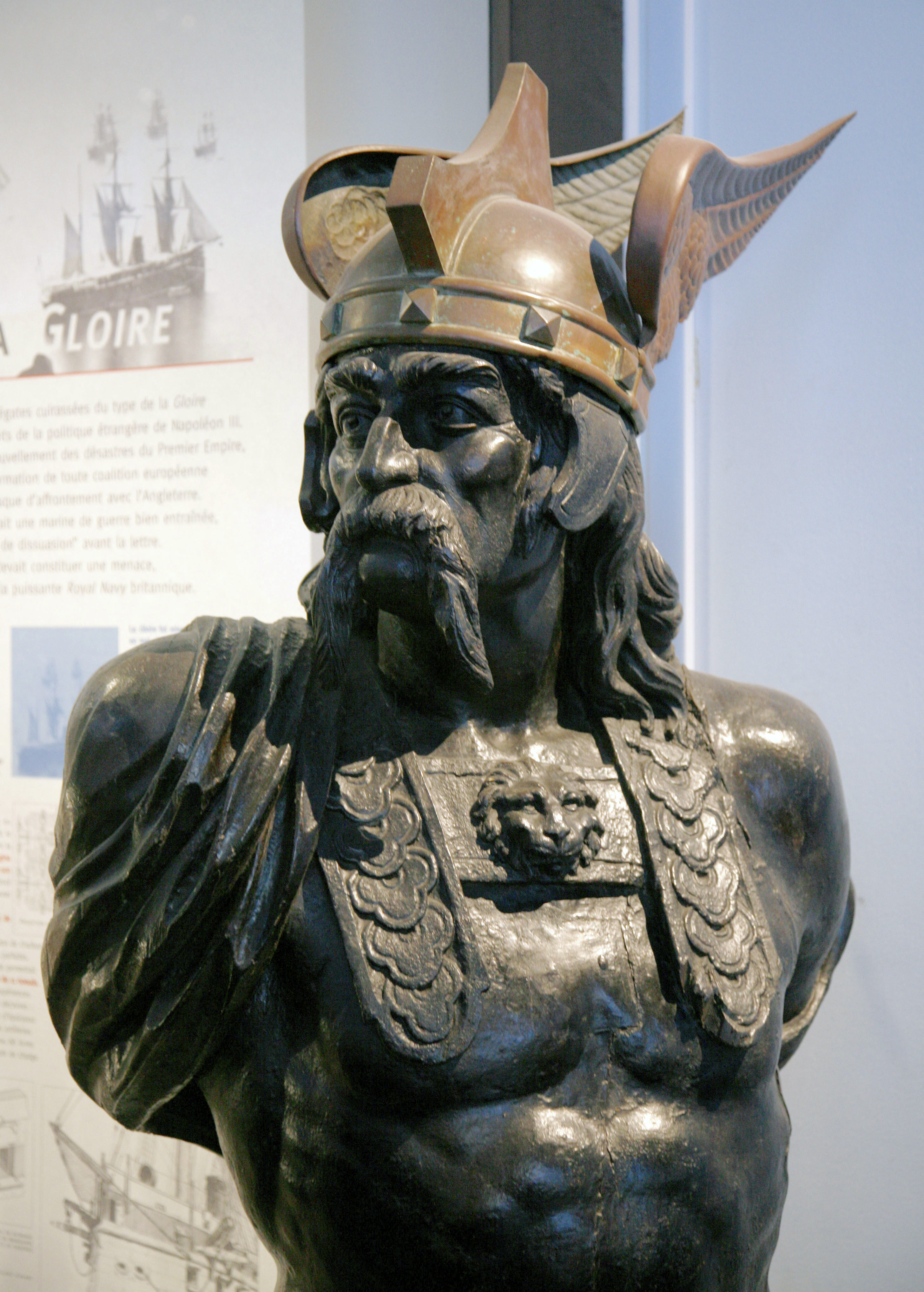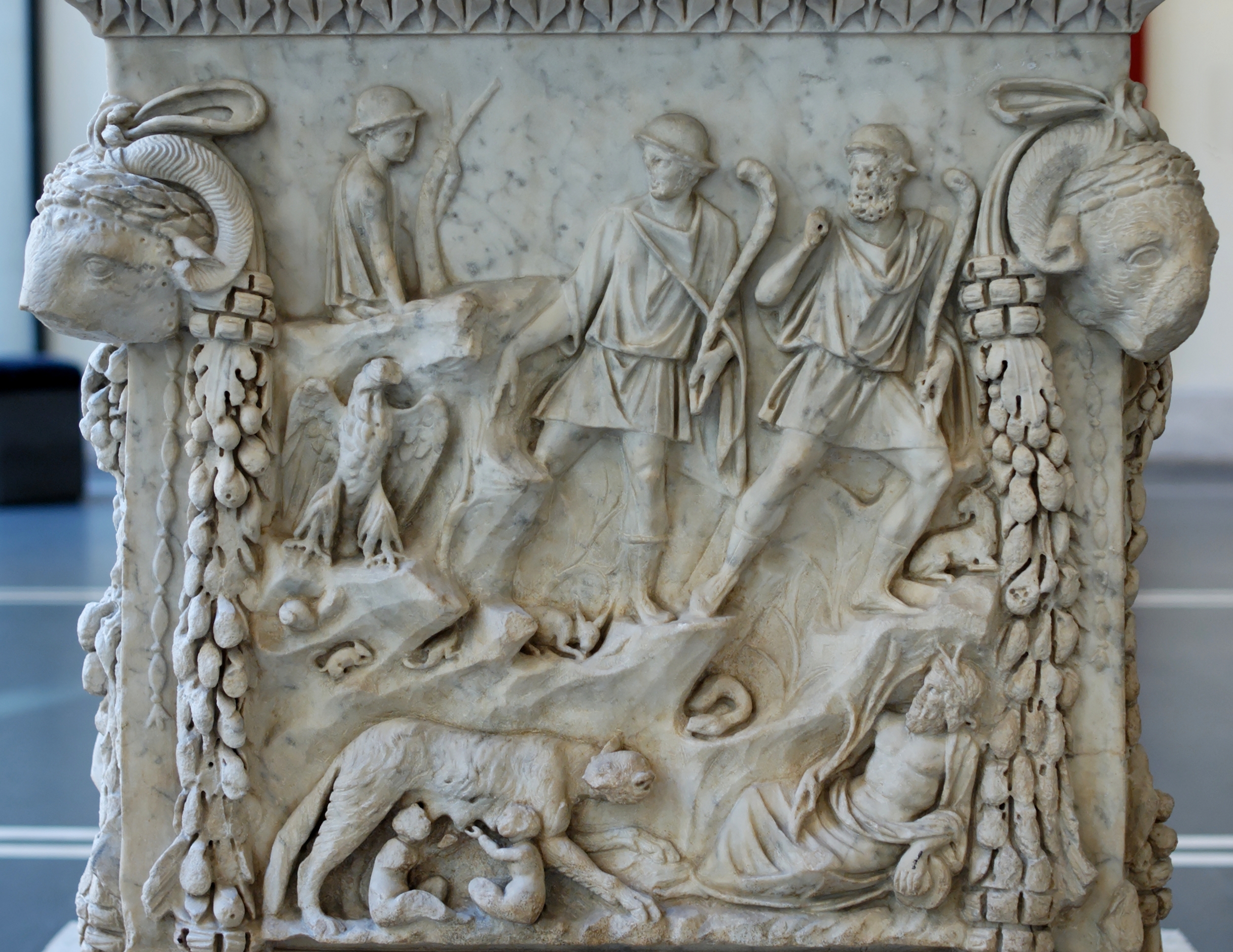|
Lucius Junius Brutus
Lucius Junius Brutus (died ) was the semi-legendary founder of the Roman Republic and traditionally one of its two first consuls. Depicted as responsible for the expulsion of his uncle, the Roman king Tarquinius Superbus after the suicide of Lucretia, in the traditional accounts it is he who led the overthrow of the Roman monarchy. He was then involved in securing the abdication of fellow consul Tarquinius Collatinus, and the suppression of a plot to restore the Tarquinian monarchy. He was claimed as an ancestor of the Roman gens Junia, including Decimus Junius Brutus and Marcus Junius Brutus, the most infamous of Julius Caesar's assassins. Traditions about his life may have been fictional, and some scholars argue that it was the Etruscan king Porsenna who overthrew Tarquinius. The plebeian status of the ''Junia gens'' has also raised doubts about his position as a consul and the alleged initial patrician domination of the office. Depicted as the nephew of Tarquinius, ... [...More Info...] [...Related Items...] OR: [Wikipedia] [Google] [Baidu] |
Denarius
The ''denarius'' (; : ''dēnāriī'', ) was the standard Ancient Rome, Roman silver coin from its introduction in the Second Punic War to the reign of Gordian III (AD 238–244), when it was gradually replaced by the ''antoninianus''. It continued to be minted in very small quantities, likely for ceremonial purposes, until and through the Tetrarchy (293–313). The word ''dēnārius'' is derived from the Latin ''dēnī'' "containing ten", as its value was originally of 10 ''As (Roman coin), assēs''.Its value was increased to 16 assēs in the middle of the 2nd century BC. The word for "money" descends from it in Italian (''denaro''), Slovene (''denar''), Portuguese (''dinheiro''), and Spanish (''dinero''). Its name also survives in the dinar currency. Its symbol is represented in Unicode as 𐆖 (U+10196), a numeral monogram that appeared on the obverse in the Republican period, denoting the 10 ''asses'' ("X") to 1 ''denarius'' ("I") conversion rate. However it can also be re ... [...More Info...] [...Related Items...] OR: [Wikipedia] [Google] [Baidu] |
Assassination Of Julius Caesar
Julius Caesar, the Roman dictator, was assassinated on the Ides of March (15 March) 44 BC by a group of senators during a Roman Senate, Senate session at the Curia of Pompey, located within the Theatre of Pompey in Ancient Rome, Rome. The conspirators, numbering between 60 and 70 individuals and led by Marcus Junius Brutus, Gaius Cassius Longinus, and Decimus Junius Brutus Albinus, stabbed Caesar approximately 23 times. They justified the act as a preemptive defense of the Roman Republic, asserting that Caesar's accumulation of lifelong political authority—including his perpetual dictatorship and other honors—threatened republican traditions. The assassination failed to achieve its immediate objective of restoring the Republic's institutions. Instead, it precipitated Caesar's posthumous Roman imperial cult, deification, triggered the Liberators' civil war (43–42 BC) between his supporters and the conspirators, and contributed to the collapse of the Republic. These ev ... [...More Info...] [...Related Items...] OR: [Wikipedia] [Google] [Baidu] |
Tarquinia (mother Of Lucius Brutus)
In Rome's early semi-legendary history, Tarquinia was the daughter of Lucius Tarquinius Priscus, the fifth king of Rome, (and either sister or aunt to Rome's seventh and final king, Lucius Tarquinius Superbus). Her father, Lucius Tarquinius Priscus, gave her in marriage to Servius Tullius, the sixth king of Rome. She was the mother of Lucius Junius Brutus, who overthrew the monarchy and became one of Rome's first consuls in 509 BC. She had another son, who was put to death by Superbus after he took the Roman rule from Servius. Ancient sources The main literary sources for Tarquinia's life are the Roman Historian Livy's (59 BC - AD 17) ''Ab urbe condita'' and Dionysius of Halicarnassus's (60 BC - after 7 BC) ''Roman Antiquities.'' Livy mentioned Tarquinia once in book one of ''Ab urbe condita'', when describing the lineage of her son Lucius Junius Brutus. Dionysius of Halicarnassus cited Tarquinia in ''Roman Antiquities'' three times. The first reference describes how Servius T ... [...More Info...] [...Related Items...] OR: [Wikipedia] [Google] [Baidu] |
Publius Valerius Poplicola
Publius Valerius Poplicola or Publicola (died 503 BC) was one of four Roman aristocrats who led the overthrow of the monarchy, and became a Roman consul, the colleague of Lucius Junius Brutus in 509 BC, traditionally considered the first year of the Roman Republic. Early life According to Livy and Plutarch, the Valerii were of Sabine origin, but settled in Rome during the reign of Titus Tatius, a contemporary of Romulus, and worked for the peaceful unification of both peoples.Plutarch, Lives. Life of Poplicola. Wikisource Valerius came from a wealthy family. His father was Volesus Valerius, and his brothers were Marcus Valerius Volusus and Manius Valerius Volusus Maximus. He had a daughter, Valeria, and possibly a son or grandson who was also named Publius Valerius Poplicola who served as consul in 475 BC and 460 BC. Before holding public office, Valerius had spoken in defense of the plebs, the common people of Rome.Livy, Ab urbe condita 1:58, 2:20.History of Rome, ... [...More Info...] [...Related Items...] OR: [Wikipedia] [Google] [Baidu] |
Spurius Lucretius Tricipitinus
Spurius Lucretius Tricipitinus is a semi-legendary figure in early Roman history. He was the first Suffect Consul of Rome and was also the father of Lucretia, whose rape by Sextus Tarquinius, followed by her suicide, resulted in the dethronement of King Lucius Tarquinius Superbus, therefore directly precipitating the founding of the Roman Republic. It is believed that Lucretius and his accomplishments are at least partly mythical and most ancient references to him were penned by Livy and Plutarch. Founding of the Republic While the king of Rome was away at the siege of Ardea, his son, Sextus Tarquinius, raped Lucretia, the wife of the king's nephew. Sextus returned to camp. The next day Lucretia dressed in black, and went to her father's house in Rome and cast herself down in the suppliant's position (embracing the knees), weeping. Asked to explain herself she insisted on first summoning witnesses and after disclosing the rape called on him and them for vengeance, a plea ... [...More Info...] [...Related Items...] OR: [Wikipedia] [Google] [Baidu] |
Sextus Tarquinius
Sextus Tarquinius was one of the sons of the last king of Rome, Lucius Tarquinius Superbus. In the original account of the Tarquin dynasty presented by Fabius Pictor, he is the second son, between Titus Tarquinius, Titus and Arruns Tarquinius (son of Tarquin the Proud), Arruns. However, according to Livy and Dionysius of Halicarnassus, he was either the third or first son, respectively. According to Roman tradition, his rape of Lucretia was the precipitating event in the Overthrow of the Roman monarchy, overthrow of the monarchy and the establishment of the Roman Republic. Early life Not much is known about Sextus Tarquinius' personal life as details about him are overshadowed by his actions. Sextus and his family were of Etruscan civilization, Etruscan descent. According to Livy, Tarquinius Superbus was having problems capturing the town of Gabii, so he sent Sextus to trick them into thinking he was defecting. Sextus became a general in their army before betraying them and ... [...More Info...] [...Related Items...] OR: [Wikipedia] [Google] [Baidu] |
Overthrow Of The Roman Monarchy
The overthrow of the Roman monarchy was an event in ancient Rome that took place between the 6th and 5th centuries BC where a political revolution replaced the then-existing King of Rome, Roman monarchy under Lucius Tarquinius Superbus with a Roman Republic, republic. The details of the event were largely forgotten by the Romans a few centuries later; later Roman historians presented a narrative of the events, traditionally dated to , but it is largely believed by modern scholars to be fictitious. The traditional account portrays a dynastic struggle in which the king's second son, Sextus Tarquinius, rapes a noblewoman, Lucretia. Upon revealing the assault to some Roman noblemen, she kills herself. The Roman noblemen, led by Lucius Junius Brutus, obtain the support of the Roman aristocracy and the plebs, people to expel the king and his family and create a republic. The Early Roman army, Roman army, supporting Brutus, forces the king into exile. Despite a number of attempts ... [...More Info...] [...Related Items...] OR: [Wikipedia] [Google] [Baidu] |
Capitoline Brutus Musei Capitolini MC1183
The Capitolium or Capitoline Hill ( ; ; ), between the Forum and the Campus Martius, is one of the Seven Hills of Rome. The hill was earlier known as ''Mons Saturnius'', dedicated to the god Saturn. The word ''Capitolium'' first referred to the Temple of Jupiter Optimus Maximus which was located on the hill, however the meaning evolved to refer to the whole hill and even other temples of Jupiter on other hills. In an etymological myth, ancient sources connect the name to ''caput'' ("head", "summit") because of a tale that stated that when the foundations for the temple were being laid, a man's head was found. The ''Capitolium'' was regarded by the Romans as indestructible, and was adopted as a symbol of eternity. The word ''Capitolium'' is a precursor to the English word '' capitol'', and Capitol Hill in Washington, D.C. is widely assumed to be named after the Capitoline Hill. Ancient history At this hill, the Sabines, creeping to the Citadel, were let in by the Roman ... [...More Info...] [...Related Items...] OR: [Wikipedia] [Google] [Baidu] |
Brennus (4th Century BC)
Brennus or Brennos was an ancient Gallic chieftain of the Senones. In , he defeated the Romans at the Battle of the Allia. Later that year, he led an army of Cisalpine Gauls in their attack on Rome and captured most of the city, holding it for several months. Brennus's sack of Rome was the only time in 800 years the city was occupied by a non-Roman army before the fall of the city to the Visigoths in 410 AD. Background The Senones were a Gaulish tribe originating from the part of France at present known as Seine-et-Marne, Loiret, and Yonne, who had expanded to occupy northern Italy.G.J. Caesar, Book 2 Chapter 2 At around 400 BC, a branch of the Senones made their way over the Alps and, having driven out the Umbrians, settled on the east coast of Italy from Ariminum to Ancona, in the so-called Ager Gallicus, and founded the town of Sena Gallica (current Senigallia), which became their capital. In 391 BC, they invaded Etruria and besieged Clusium. The Clusines appealed to R ... [...More Info...] [...Related Items...] OR: [Wikipedia] [Google] [Baidu] |
Gaul
Gaul () was a region of Western Europe first clearly described by the Roman people, Romans, encompassing present-day France, Belgium, Luxembourg, and parts of Switzerland, the Netherlands, Germany, and Northern Italy. It covered an area of . According to Julius Caesar, who took control of the region on behalf of the Roman Republic, Gaul was divided into three parts: Gallia Celtica, Gallia Belgica, Belgica, and Gallia Aquitania, Aquitania. Archaeologically, the Gauls were bearers of the La Tène culture during the 5th to 1st centuries BC. This material culture was found throughout Gaul and as far east as modern-day southern Poland, Slovakia, and Hungary. Warbands led by the Gaul Brennus (leader of the Senones), Brennos Battle of the Allia, sacked Rome in 387 BC, becoming the only time Rome was conquered by a foreign enemy in 800 years. However, Gallia Cisalpina was conquered by the Romans in 204 BC and Gallia Narbonensis in 123 BC. Gaul was invaded after 120 BC by the Cimbri ... [...More Info...] [...Related Items...] OR: [Wikipedia] [Google] [Baidu] |
Ab Urbe Condita Libri
The ''History of Rome'', perhaps originally titled , and frequently referred to as (), is a monumental history of ancient Rome, written in Latin between 27 and 9 BC by the Roman historian Titus Livius, better known in English as "Livy". The work covers the period from the legends concerning the arrival of Aeneas and the refugees from the fall of Troy, to the city's founding in 753 BC, the expulsion of the Kings in 509 BC, and down to Livy's own time, during the reign of the emperor Augustus. The last event covered by Livy is the death of Drusus in 9 BC. 35 of 142 books, about a quarter of the work, are still extant. The surviving books deal with the events down to 293 BC (books 1–10), and from 219 to 166 BC (books 21–45). Contents Corpus The ''History of Rome'' originally comprised 142 "books", 35 of which—Books 1–10 with the Preface and Books 21–45—still exist in reasonably complete form. Damage to a manuscript of the 5th century resulted ... [...More Info...] [...Related Items...] OR: [Wikipedia] [Google] [Baidu] |
Livy
Titus Livius (; 59 BC – AD 17), known in English as Livy ( ), was a Roman historian. He wrote a monumental history of Rome and the Roman people, titled , covering the period from the earliest legends of Rome before the traditional founding in 753 BC through the reign of Augustus in Livy's own lifetime. He was on good terms with members of the Julio-Claudian dynasty and was a friend of Augustus. Livy encouraged Augustus’s young grandnephew, the future emperor Claudius, to take up the writing of history. Life Livy was born in Patavium in northern Italy, now modern Padua, probably in 59 BC. At the time of his birth, his home city of Patavium was the second wealthiest on the Italian peninsula, and the largest in the province of Cisalpine Gaul (northern Italy). Cisalpine Gaul was merged into Italy proper during his lifetime and its inhabitants were given Roman citizenship by Julius Caesar. In his works, Livy often expressed his deep affection and pride for Patavium, and the ... [...More Info...] [...Related Items...] OR: [Wikipedia] [Google] [Baidu] |









